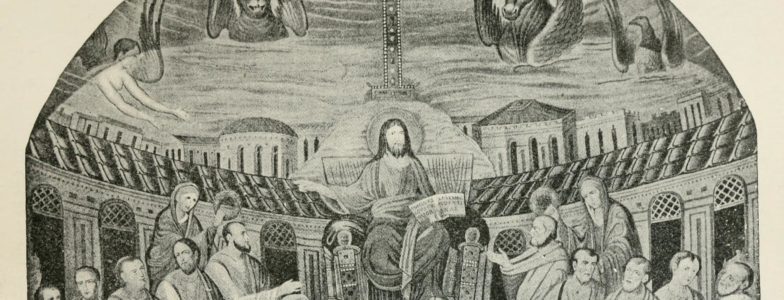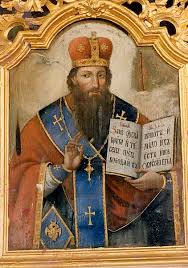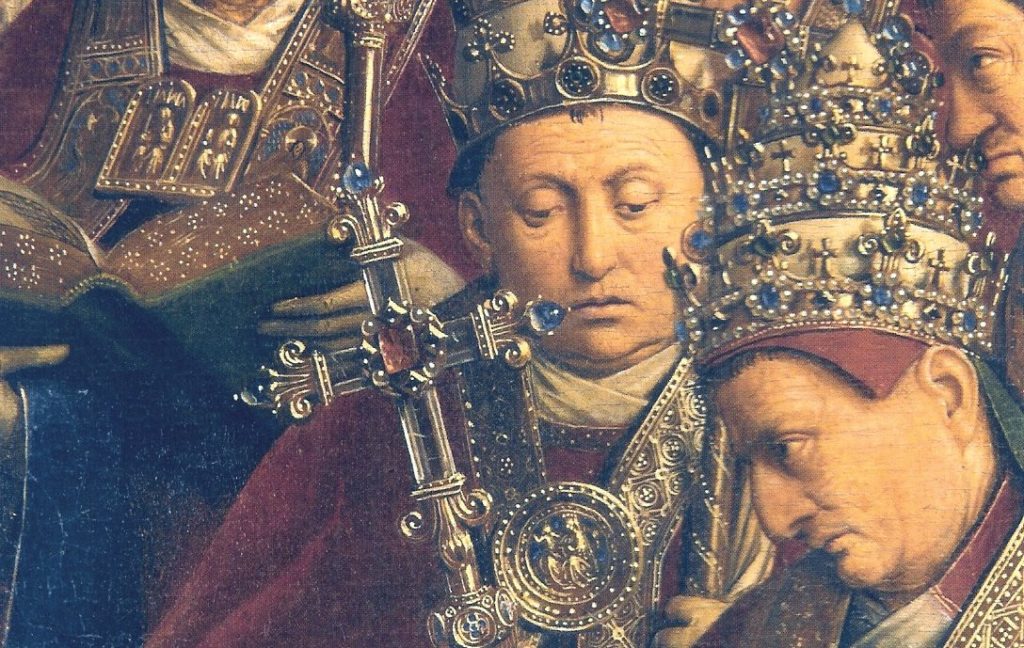Why Do Babies Die in the Womb at 38 Weeks

Almost everyone knows that the Catholic Church building opposes abortion. Nevertheless, few are enlightened of the long and rich history of the Church's reverence and respect for human life, and fewer still can explain exactly why the Church cannot change her teachings on abortion.
This commodity will address a number of common questions regarding the teachings of the Catholic Church on abortion.
The Cosmic Church on Ballgame: Misconceptions
Misconception ane – The Catholic Church Holds a "Position" on Abortion.
The Church does not have a "position" on abortion, nor does she have a mere "stance" on it. Positions and opinions are temporary decisions based on a subjective understanding of electric current circumstance, and therefore are liable to change. The Church building interprets the natural law, which she cannot modify any more than than she can repeal the principles of magnetism and gravity. This interpretation is past necessity objective and permanent.
Our understanding of this interpretation of natural police may exist refined, but the principle itself is never changed.
Misconception 2 – The Catholic Church building Once Permitted Abortion.
The Religious Coalition for Reproductive Selection (RCRC) summarizes the nearly important pro‑abortion misconceptions about the early on history of Church teachings regarding abortion. RCRC said:
"Catholic theology, which now regards the early fetus equally a person, did not always do so. The Church first adopted the belief of Aristotle, St. Jerome, St. Augustine, and St. Thomas Aquinas that ensoulment occurs several weeks afterwards conception. Pope Innocent III, who ruled at the plow of the 13th Century, made that belief function of Church doctrine, assuasive abortion until fetal animation. It was not until 1869 that the Church prohibited abortion at any time and for whatever reason."[1]

St. Basil the Bully
To brainstorm with, the Cosmic Church building has never approved of or condoned abortion during any function of its history. Various Middle Age-era theories most 'formed' and 'unformed' fetuses and 'delayed ensoulment' or 'delayed animation' were intellectual exercises focused on more accurately understanding the evolution and nature of the soul, but non on determining the morality of abortions.
This is shown by the fact that theologians who held these views consistently condemned abortion in the strongest possible terms. As far back as the fourth century, St. Basil the Great, who was obviously familiar with this controversy, said, "The hairsplitting difference between formed and unformed makes no difference to united states of america. Whoever deliberately commits abortion is field of study to the penalty for homicide …. Let her that procures abortion undergo ten years' penance, whether the embryo were perfectly formed or not."
Just every bit importantly, the Cosmic Church has never accepted the theory of delayed animation. The only time that the Church has e'er addressed this question is when Pope Innocent Xi officially condemned the theory that blitheness took place at birth.
Misconception iii – The Catholic Church on Abortion is Inconsistent.
Similar other abortionists, illegal practitioner Ruth Barnett knew that she would drum up a lot more than business concern if she could convince Catholic women that the Church was being "inconsistent" on the discipline. She wrote:
"Until the terminate of the 16th Century with the reign of Pope Sixtus V, the Church building did, indeed, permit the termination of pregnancies within forty days of conception for a male and 80 days for a female — the old Aristotelian concept … But I believe that a case tin be fabricated — and many intelligent Catholics take agreed with me — that the Church's attitudes towards ballgame take varied in past history, are non always consistent and can, like other elements of Cosmic dogma, be changed to see human being's increased enlightenment and irresolute social weather."[2]
The teachings of the Cosmic Church have been uniformly against ballgame in whatsoever form, and have been stated and restated consistently through the centuries.
The earliest surviving written catechism is the Didache, or The Teaching of the Twelve Apostles, which dates back to the late first century. Information technology said, "You shall not murder .… You shall not procure ballgame, nor destroy a newborn child."[4]
In the year 197, Tertullian wrote in his Apologeticus:
"For us [Christians], murder is once and for all forbidden; then even the child in the womb, while yet the mother'southward blood is nonetheless being drawn on to form the human being being, it is not lawful for us to destroy. To forbid birth is only quicker murder. It makes no difference whether ane takes away the life once born or destroys it equally information technology comes to birth. He is a man, who is to be a human being; the fruit is always present in the seed."
An overwhelming number of other early Church building theologians carefully examined the methods, motives, morality and metaphysics surrounding abortion. They unanimously described all abortions equally a heinous sin, including:
- Barnabas (in A.D. 137)
- Athenagoras of Athens (A.D. 177)
- Minucius Felix (c. 200-225)
- Hippolytus, Bishop of Pontius
- Ephraem the Syrian
- Lactantius
- Cyprian, Bishop of Carthage
- Ephipanius, Bishop of Salamis
- Methodius, Bishop of Olympus
- St. John Chrysostom, Bishop of Constantinople
- Clement of Alexandria, known as "The Father of Theologians"
- St. Augustine of Hippo
- St. Jerome
- St. Ambrose, Bishop of Milan
- St. Basil the Great
- The assembled Councils of Ancyracanon (314), Elvira in Granada, Espana (305), Chalcedon (451) and Ancyra in Galatia, Asia Pocket-size (314).[5]
Keep in mind that all of these condemnations of abortion by theologians and councils took place before the beginning of the 6th century, and Church condemnation of abortion in all cases has continued uninterrupted since that time.
Misconception 4- Popes Regularly Change the Teaching of the Catholic Church building on Abortion.
The popes have always taught — in accordance with Church teachings — that abortion is murder. Even so, some confusion exists because the penalties for the murder of a preborn kid have been changed several times in the history of the Church.

In 1588, Pope Sixtus V tried to discourage abortion by reserving absolution to vatican city alone. It presently became evident that such an arrangement was impractical, and so in 1591, just three years later on, Pope Gregory Xiv returned absolution for abortion to the local bishop.[6]
In 1679, Pope Innocent XI condemned the writings and teachings of 2 theologians, Thomas Sanchez and Joannis Marcus, who believed that abortion was lawful if the fetus was non notwithstanding animated or ensouled and the purpose of the ballgame was to prevent shame to the woman.[seven] This act showed decisively that the Church did not tolerate abortion, and was willing to right those who spread error regarding child-killing.
Misconception 5 – Abortion was not forbidden until 1869, in Pope Pius 9'southward reign.
Ballgame supporters allege that, in the year 1869, Pope Pius Ix condemned abortion for the very commencement time.
In reality, what Pope Pius did was officially remove the stardom betwixt the animated and unanimated fetus from the Code of Canon Police.[8] This action dealt not with theology, simply with discipline, and simply fabricated the punishment for abortion at any phase uniform. The Pope removed the distinction in order to support the Church'south teaching that life and ensoulment both begin at conception.
Decision
Pro-abortionists allege that Catholics can ignore a Church teaching that has not been held from the very beginning of its history, implying that, if it had been taught from the beginning, they would be obliged to obey it. From the very offset of her history, the Catholic Church on ballgame has been consistent: she hasever taught that abortion is gravely sinful.
The Canon of the Cosmic Church teaches:
"Since the outset century the Church has affirmed the moral evil of every procured ballgame. This teaching has not changed and remains unchangeable. Directly abortion, that is to say, abortion willed either every bit an end or a means, is gravely contrary to the moral police" [¶2271].
Endnotes
[ane] Religious Coalition for Abortion Rights (now RCRC). June 1978 propaganda pamphlet entitled "ABORTION: Why Religious Organizations in the United States Want to Continue information technology Legal."
[2] St. Basil the Corking, priest (c. 329-379), Outset Approved Letter of the alphabet, from the work 3 Canonical Messages. Canons 2 and viii. Loeb Classical Library, Volume 3, pages 20 to 23.
[iii] Ruth Barnett. They Weep On My Doorstep [Beaverton, Oregon: Halo Publishers], 1969, pages 106 and 107.
[4] The Didache ("The Lord'south Instruction to the Gentiles through the Twelve Apostles"). 2, 2, translated by J.A. Kleist, S.J., Ancient Christian Writers, Volume vi. Westminster, 1948, page 16.
[5] Barnabas (c. lxx-138), Epistle, Volume II, folio 19; Athenagoras of Athens, letter to Marcus Aurelius in 177, Legatio pro Christianis ("Supplication for the Christians"), page 35; Minucius Felix, theologian (c. 200-225), Octavius, p. 30; Tertullian, theologian (150-225), Treatise on the Soul, pages 25 and 27; Clement of Alexandria, priest and the "Father of Theologians" (c. 150-220), Christ the Educator, Volume II, page 10; St. Augustine, Bishop of Hippo (354-430), De Nuptius et Concupiscus ("On Marriage and Concupiscence"), 1.17; Cyprian, Bishop of Carthage (c. 200-258), Letters, page 48; St. Jerome, Bible Scholar and translator (c. 340-420), Letter to Eustochium, 22.13 Hippolytus, theologian and Bishop of Pontius, Refutation of All Heresies 9.seven(A.D. 228); Lactantius, Divine Institutes 6:20 (A.D. 307); Ephipanius, Bishop of Salamis (c. 315-403); Ephraem the Syrian, theologian (306-373), De Timore Dei, page ten; St. Ambrose, Bishop of Milan (c. 339-397), Hexameron, 5.xviii.58; St. Basil the Great, priest (c. 329-379), Commencement Approved Alphabetic character, from the workThree Canonical Letters. Canons 2 and 8. Loeb Classical Library, Volume III, pages 20 to 23; St. John Chrysostom, Homilies on Romans 24 (A.D. 391); the Council of Ancyracanon 21, (A.D. 314); Council of Elvira in Granada, Spain (305), Canons, 63 and 68; Council of Ancyra in Galatia, Asia Pocket-size (314), Canon, 21. The Declaration on Procured Abortion tells us that "It is true that in the Middle Ages, when the opinion was by and large held that the spiritual soul was non present until after the start few weeks, a distinction was made in the evaluation of the sin and the gravity of penal sanctions. Excellent authors allowed for this first menses more lenient case solutions which they rejected for post-obit periods. But it was never denied at that time that procured abortion, fifty-fifty during the first days, was objectively grave error. This condemnation was in fact unanimous" [¶7].
[half-dozen] Lucius Farraris, Bibliotheca Iuridica Moralis Theologica. Roma: 1885, I, pages 36 to 38.
[7] Denzinger‑Schoenmetzer. Enchiridion Symbolorum [Rome: Herder], 1965, pages 2,134 to 2,135.
[eight] Codicus Iuris Canonici Fontes. 9 Volumes. Rome, 1923 to 1939, specification number 552.
Source: https://www.hli.org/resources/has-the-catholic-church-always-condemned-abortion/
0 Response to "Why Do Babies Die in the Womb at 38 Weeks"
Post a Comment